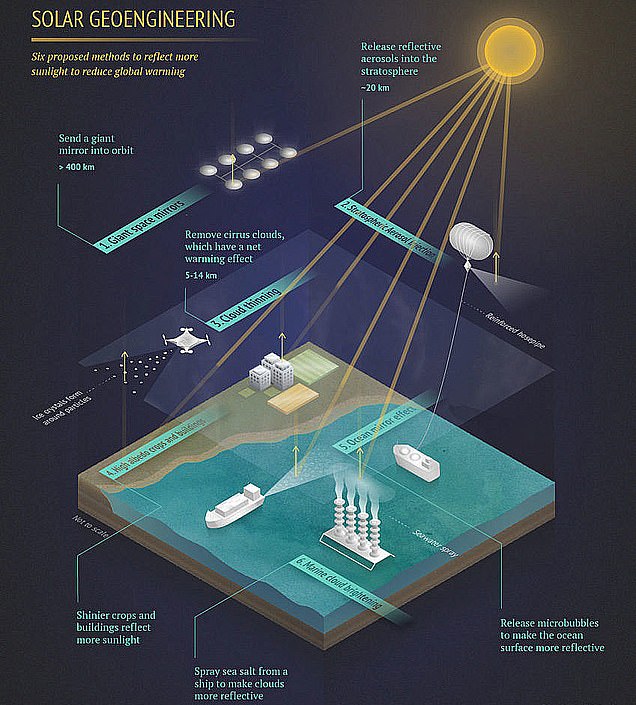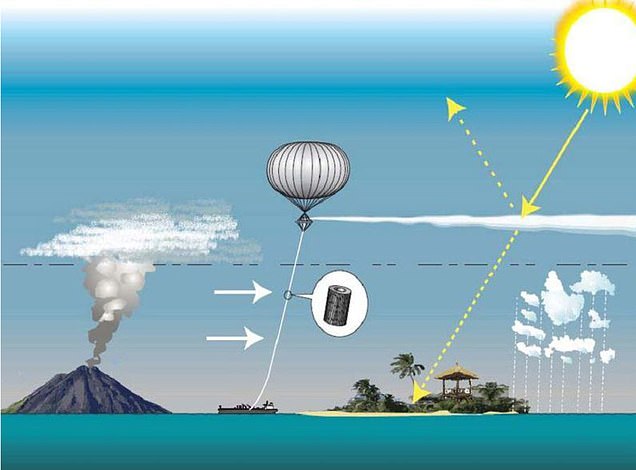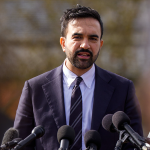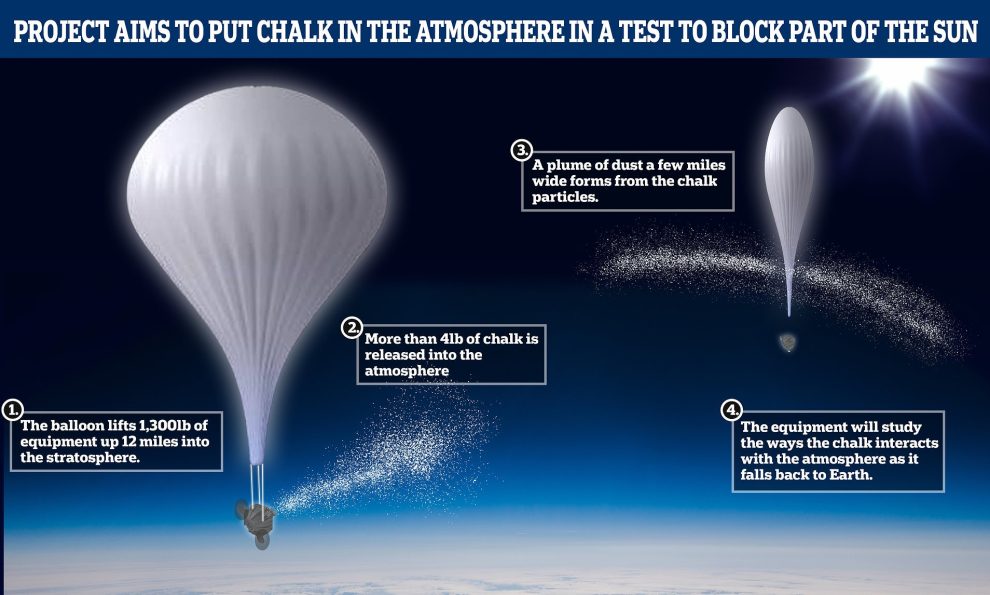The idea has been heavily criticised since its inception, with project director Frank Keutsch even calling the need for this scale of geo-engineering ‘terrifying’.
And experts have warned that the unusual technique could be disastrous for weather systems in ways nobody can predict.
Backed by a range of private donors including Gates, the test mission is launching from Sweden as they could offer a launch by the end of this summer.
The test balloon will lift 600kg of scientific equipment 12 miles above the surface of the Arctic town and if it all goes well, about 2kg of dust will be released.
This will then create a dust plume several kilometres in length – not large enough to have any effect on the intensity of the sun’s rays hitting the Earth.
During that first test the team would gather information on how particles of dust react with the air.
This could then be fed into computer models to determine what would happen if it were ever carried out at scale.
Keutsch told the Times he wants to determine the true effects, as current models ‘may be too optimistic’ and make the technique look attractive.
It would takes tonnes of dust and plumes many hundreds of kilometres to make a difference – the theory being that the dust would create a massive sunshade.

This would reflect some of the sun’s rays and heat back into space, dimming those that get through and so protecting Earth from the ravages of climate warming.
Keutsch, whose Harvard lab is leading the project, says the strategy would only be deployed in desperation to stop parts of the planet becoming uninhabitable.
Without any efforts to stop climate change, such as curbs on greenhouse gas emissions from fossil fuels and other pollutants, parts of the world will be up to 10 degrees Fahrenheit warmer than they are today, studies show.

This would leave parts of the planet uninhabitable by humans, including areas of Australia where maximum temperatures already top 123 degrees Fahrenheit.
However, critics of the dust cloud concept say it gives politicians an excuse not to take the difficult action required to properly tackle climate change.
University of Edinburgh professor, Stuart Haszeldine, told the Times that blocking the sun would do nothing to remove the main cause of global warming.

‘It would cool the planet by reflecting solar radiation but once you’re on to that, it’s like taking heroin — you’ve got to carry on doing the drug to keep on having the effect,’ he said.
He explained that without tackling pollution first we would have to keep lifting more and more dust into the stratosphere, which would change the daytime sky to white and if it ever stopped there would be a rise in global temperatures again.
Sir David King from the University of Cambridge, told The Times there should be a moratorium on rolling the technique out.
He said it could be disastrous for weather systems in ways nobody can predict, so data should be gathered through modelling and other techniques.
Keutsch said that is exactly what they are doing with this test. Sending a small enough plume not to cause a problem, but enough to feed into modelling.
David Keith, a member of the study team, said the idea was to use the technique alongside other measures, rather than as a solution in its own right.
Adding it would ‘buy the world some time’ while it tackled the wider pollution problem, including finding technologies that can pull carbon from the atmosphere.
‘The fact is, whatever opinions I or other people of my generation have about solar engineering, including people who think it should never and can never be used, we’re not the ones who are going to decide,’ he told the Times.
‘The decision we face now is whether to study it seriously. And from my perspective, doing serious investigation of what its risks are and how well it could work provides the next generation with better information to make a more informed decision.’
There are a number of geo-engineering theories being proposed, including ‘shinier crops and buildings to reflect more sunlight’, micro-bubbles in the ocean and removing cirrus clouds.
Other proposals include giant space-based mirrors and spraying sea salt into the sky to make clouds more reflective.
Story cited here.
























